Popular Canadian Fable dishware (sold as “non-toxic” & “Lead-free”) tests positive for Lead in glaze — read more here
Alternate Title Concept:
Aptly named “Fable” pottery, selling Lead-contaminated ceramics and marketing them as Lead-free. Read more here.
This is an ad-free article.
There’s a lot of information (including lots of images) in this article, so we are publishing it as an ad-free article to make it easier to read. To make a contribution to help us keep our most widely-read articles ad-free, click here. Thank you.
First some screenshots from Fable’s website
For those new to the Lead Safe Mama website:
Tamara Rubin is a multiple-federal-award-winning independent advocate for childhood Lead poisoning prevention and consumer goods safety, and a documentary filmmaker. She is also a mother of Lead-poisoned children (two of her sons were acutely Lead-poisoned in 2005).
- Tamara owns and runs Lead Safe Mama, LLC — a community collaborative woman-owned small business for childhood Lead poisoning prevention and consumer goods safety.
- Since 2009, Tamara has been using XRF technology (a scientific testing method) using the exact instrumentation employed by the U.S. Consumer Product Safety Commission to test consumer goods for toxicants (specifically heavy metals — including Lead, Cadmium, Mercury, Antimony, and Arsenic).
- Since July of 2022, the work of Lead Safe Mama, LLC has been responsible for 5 product recalls (FDA and CPSC).
- All test results reported on this website are science-based, accurate, and replicable.
- Items that Lead Safe Mama, LLC report on are tested multiple times to confirm the results published (for each component tested).
- Tamara’s work was featured in Consumer Reports Magazine in February of 2023 (March 2023 print edition) and The Guardian in November of 2023.
We currently have four articles published related to Fable dishware:
- Our initial article (below) detailed the concerns and our test results from testing several examples of their products.
- A follow-up piece features our email exchange with the owner of Fable (an effort to help him better understand the issue as it was clear he did not read — or did not understand the content of — our initial article).
- An article including Fable’s response to customers — (which is identical to the statement published on their website) — and some commentary from me.
- A piece which details some other myths and BLATANT misinformation we found on Fable’s website today (12/1/2023).
Published: November 28, 2023 — Tuesday
All the screenshots from the Fable website incorporated in this article (above and below) were taken from Fable’s website on Tuesday, November 28, 2023.
Some quotes from Fable’s website:
“Free of Lead, Cadmium, and other heavy metals”
“sustainably crafted”
“we sustainably craft our premium tableware with integrity”
“put the earth, and it’s people, first”
“undergo strict testing”
“hand-finished, organically shaped and 100% non-toxic”
“we want the world to be a better place, starting at the kitchen table”
“we aim to make a difference”
“we take a holistic view of our product”
“ensure every part of our products meets our standard of excellence”
“proudly a Certified B Corporation”
“part of a global community of businesses that meet high standards of social and environmental impact”
Most Important:
“We’re constantly working on our commitment to sustainable, ethical, and transparent practices, and we’re thrilled to be on this journey towards continuous improvement and collective action.”
Where to start?
Summary (TLDR): Contrary to Fable’s assertions that their pottery is “Lead-free” (see screenshots with their corporate statements above):
- Both the substrate and the glaze on several samples of Fable pottery that we tested did test positive for Lead.
- The Lead levels found in the substrate — the base clay — of Fable pottery was not at all unexpected. Traces of Lead are commonly found in natural clay in the 20 to 60 ppm range.
- The glazed areas tested positive for Lead at levels that are slightly above what might be considered a “trace contaminant” level — and at levels that are significantly higher than what was found in the substrate.
- Levels found in the glaze were consistently higher than the U.S. Consumer Product Safety Commissions’s 90 ppm allowable limit for Lead in the glaze of newly-manufactured items intended for use by children.
- Most companies selling pottery marketed as “Lead-free” make an effort to ensure their glazes are Lead-free (here is one example, and here’s a second example) — Fable has apparently not made this effort.
- Lead Safe Mama, LLC’s test results of Fable pottery (and the implications) are discussed in detail below.
- While these dishes are decidedly not Lead-free, they are generally in the range of “Lead-safe“ — and are not likely to expose the user to Lead in normal daily use (when new and when used as intended).
- The concern is more for greenwashing, and a lack of corporate accountability; if they are letting these Lead-levels slip through their “standard of excellence” now (for dishes they claim are free of toxicants, including Lead), there’s the possibility that higher levels of Lead could slip through their insufficient screening process on future production batches.
- This problem needs to be resolved now for Fable to maintain the level of integrity that they espouse.
Please note, the summary above is just that — a summary. To better understand the concerns, please take the time to read the full article below (especially if you are deciding what you would like to do with the dishes you purchased from Fable — dishes you purchased when you were under the impression they were truly a “Lead-free” product).
The best place to start (for this particular article, given the scope of information included) is with a table of contents for the article, outlining the specific sections you can read as you scroll down (to make sure you don’t miss any important sections you may want to read). So here’s a table of contents for what you will find below:
- Section #1) Test results for several examples of Fable dishware (that Lead Safe Mama, LLC tested in October 2023)
- Section #2) An explanation of the test results for the specific examples of these products that Lead Safe Mama, LLC tested
- Section #3) How is it Fable can (legally) label their products as Lead-free when they are not Lead-free?
- Section #4) The issue of greenwashing amplified by the voices of (unsuspecting) “influencers” (B-Corps, “sustainability,” and ALL of the BUZZ words!)
- Section #5) The “Made in Portugal” issue (specifically as it relates to glazed ceramics made in Portugal)
- Section #6) Are these products going to poison my family?
- Section #7) A letter to the owners of Fable: Appropriate (and inappropriate) possible “next steps” for the company. (Pro-tip: Don’t threaten to sue Lead Safe Mama, LLC for sharing replicable scientific facts about your products — it’s a bad look and your customers won’t react well to that.)
- Section #8) Some additional related reading that may be of interest to those reading this article (including a link to my documentary feature film on childhood Lead poisoning prevention and consumer goods safety)
- Section #9) In Conclusion
Section #1) Test results for several examples of Fable dishware (that Lead Safe Mama, LLC tested in October 2023)
In October of 2023, we tested several examples of Fable dishware — all purchased fairly recently by families in Canada.
Fable is known, because of their extensive and ubiquitous social media marketing, as being a “Lead-free” brand.
Families I work with (mostly families of Lead-poisoned children, but also families looking to protect their children from Lead exposure) are always looking for Lead-free alternatives for products in their home and I have gotten countless requests to test products made by the Fable brand. Given the marketing hype associated with Fable (and the significant online presence of the brand — including on social media channels), many Lead Safe Mama friends, fans and followers have been excited about the potential for these products to hold up to the manufacturer’s claims.
Unfortunately, the Lead-free claims of the Fable brand pottery are, in fact, a fable (based on the archaic meaning of the word — as seen on Dictionary dot com: A fictitious tale).
In this section of this article (Section #1,) you will see photos of three examples of Fable pottery that we tested in October 2023 using XRF technology.
- Each item was tested multiple times to confirm the results reported below.
- Each item was tested against a known Lead-free background (a Lead-free table or counter, previously tested and confirmed to be Lead-free).
- All testing was done with a freshly calibrated XRF instrument testing in “Consumer Goods Mode.”
- Consumer Goods Mode on a non-radioactive source (tube-based) XRF instrument measures the amount of Lead in parts per million (ppm) and generally reads at a shallower depth than a radioactive-source instrument designed for testing for Lead in paint.
- Instruments that accurately test consumer goods (in the field) generally range in price (new) from $35,000 to $55,000, depending on the software packages installed and the related testing capabilities of those software packages.
- Instruments for testing Lead in paint are much less expensive (in the range of $10,000 to $15,000) and are fundamentally different (they measure in milligrams of Lead per square centimeter) and are not intended for testing consumer goods (and will not give useful information if used to test consumer goods). You can read more about that at this link.
Three Examples of Fable Pottery with XRF Test Results
a Plate, a Bowl, & a Cup
Section #1.a.) A Fable cup & XRF test results 

Lead Level Range:
30 to 253 parts per million (ppm)
Range for Glazed Areas: 177 to 253 ppm
Range for Unglazed Clay Areas: 30 to 62 ppm
Cup Reading #1) Glazed Surface of Cup
- Lead (Pb): 215 +/- 38 ppm
- Cadmium (Cd): non-detect
- Mercury (Hg): non-detect
- Iron (Fe): 1,105 +/- 247 ppm
- Copper (Cu): 408 +/- 78 ppm
- Zinc (Zn): 22,400 +/- 800 ppm
- Zirconium (Zr): 37,400 +/- 1,600 ppm
- Barium (Ba): 628 +/- 57 ppm
Cup Reading #2) Unglazed Bottom of Cup
- Lead (Pb): 46 +/- 16 ppm
- Cadmium (Cd): non-detect
- Mercury (Hg): non-detect
- Iron (Fe): 4,800 +/- 396 ppm
- Zinc (Zn): 46 +/- 23 ppm
- Barium (Ba): 628 +/- 57 ppm
Section #1.v.) A Fable bowl & XRF test results
Lead Level Range:
55 to 217 parts per million (ppm)
Range for Glazed Areas: 169 to 217 ppm
Range for Unglazed Clay Areas: 55 to 83 ppm
Bowl Reading #1) Glazed Surface of Bowl
- Lead (Pb): 193 +/- 24 ppm
- Cadmium (Cd): non-detect
- Mercury (Hg): non-detect
- Iron (Fe): 1,007 +/- 161 ppm
- Copper (Cu): 327 +/- 48 ppm
- Zinc (Zn): 17,600 +/- 500 ppm
- Zirconium (Zr): 21,600 +/- 600 ppm
Bowl Reading #2) Unglazed Bottom of Bowl
- Lead (Pb): 69 +/- 14 ppm
- Cadmium (Cd): non-detect
- Mercury (Hg): non-detect
- Antimony (Sb): 29 +/- 14 ppm
- Iron (Fe): 5,733 +/- 333 ppm
- Zinc (Zn): 74 +/- 20 ppm
- Bismuth (Bi): 23 +/- 10 ppm
Section #1.a.) A Fable plate & XRF test results
Lead Level Range:
43 to 259 parts per million (ppm)
Range for Glazed Areas: 189 to 259 ppm
Range for Unglazed Clay Areas: 43 to 71 ppm
Plate Reading #1) Glazed Surface of Plate
- Lead (Pb): 224 +/- 35 ppm
- Cadmium (Cd): 17 +/- 11 (likely due to pinkish hue of this dish)
- Mercury (Hg): non-detect
- Iron (Fe): 1,221 +/- 234 ppm
- Copper (Cu): 325 +/- 67 ppm
- Zinc (Zn): 16,500 +/- 600 ppm
- Zirconium (Zr): 18,000 +/- 700 ppm
Plate Reading #2) Unglazed Bottom of Plate
- Lead (Pb): 57 +/- 14 ppm
- Cadmium (Cd): non-detect
- Mercury (Hg): non-detect
- Iron (Fe): 4,918 +/- 325 ppm
- Zinc (Zn): 63 +/- 21 ppm
- Barium (Ba): 820 +/- 50 ppm
Section #2) An explanation of the test results for the specific examples of these products that Lead Safe Mama, LLC tested
The levels of Lead found in the examples of Fable pottery that we tested were relatively low (as compared to many other newly-manufactured examples of ceramics from modern dishware brands that do not claim to be Lead-free) — but they were not negative.
The levels of Lead found in the glaze were consistently higher than the levels of Lead found in the ceramic substrate of these three examples, clearly indicating that there is a Lead-contamination issue with Fable’s glaze that goes beyond trace contaminants that might “naturally” be found in earth used to make natural clays (finding trace contamination of clay-based products in the range of 20 to 60 ppm is common). Given the glaze for the items we tested was primarily white (or pinkish-white) the levels found are consistent with a white pigment ingredient/ component of the glaze that likely has a higher level of Lead than other components of the glaze (above a background level). This is common with white-tinted glazes, and especially with white-tinted glazes for ceramics made in Portugal (here’s another example from a different brand).
Trace Cadmium was found in the plate, which has pink-tinted glaze. Pinks and reds are often contaminated with Cadmium (or even have Cadmium as a primary intentionally-added ingredient to the glaze).
The bowl that we tested also tested positive for trace Antimony (a known carcinogen) in the ceramic substrate. If covered with a safe Lead-free glaze, that level of Antimony would not be particularly concerning — but it is also not negative.
So three toxic heavy metals were found in these dishes with testing conducted using XRF technology. While the potential human exposure risk is minimal given the levels found, it is not negative. The greater concern is the false advertising by this company, especially given the EXTREME level of greenwashing language used on their website.
Section #3) How is it Fable can (legally?) label their products as Lead-free when they are not Lead-free?
There are several different ways to measure Lead in consumer goods, and several different limits specifically linked to the various methods of measurement. A common mistake made by (countless) dishware manufacturers is that they often conflate (confuse) one type of measurement with another. Specifically, many dishware manufacturers mistakenly believe that if their product passes the FDA testing requirements for leaching (i.e. whether or not there is extractable Lead coming off of the dish when it is new/ at the time of manufacture), that this means their product is definitively “Lead-free.” This is not actually a correlation that can be made.
Total Lead content of a ceramic substrate (or of the glaze applied to that ceramic substrate) cannot be measured with leach-testing technology, so leach-testing technology does not provide sufficient (or appropriate) data to determine if a product is Lead-free.
In order to determine if a substrate or glaze (or other coating) is Lead-free (or if it does contain Lead and, if so, quantitatively how much Lead it contains), entirely different scientific methodologies must be used (not leach-testing). These technologies include XRF technology (discussed here, the method used for results reported on this website and one of the methods also employed by the U.S. Consumer Product Safety Commission to determine product safety and regulatory compliance) or digestive testing (in which a substance or product is dissolved in a lab and tested using scientific instrumentation available to laboratories).
If an item tests positive for Lead using XRF technology, it is (by definition) NOT Lead-free.
- The Consumer Product Safety Commission (CPSC) sets limits for Lead in items intended for use by children based on total Lead content testing (the FDA uses leach-testing).
- The CPSC commonly uses XRF technology as a screening tool to determine compliance with the Consumer Product Safety Improvement Act of 2008 (CPSIA, for short).
- In 2008, the CPSIA set a limit of 90 ppm Lead for the paint, glaze, or coating for any component of any item manufactured for use by children.
- Leachability is not relevant for this legislation — the mere presence of Lead is relevant — because it is so very toxic and if it is present it has the possibility to leach (or otherwise be an exposure source to children) in the future (even if it does not leach at the time of manufacture).
Unfortunately, dishes are not considered (by most regulatory bodies, including the CPSC) to be “items intended for use by children” (even though we all know children obviously use dishes, along with the rest of the family). Consequently, Lead levels above 90 ppm in the glaze (or above 100 ppm in the substrate) of a dishware/ tableware product is 100% legal. The only exception to this is if the item is being sold and marketed with language (or design elements) that clearly indicate the item is explicitly “intended for use by children.” (An example of this would be a ceramic tea set sold as an item for children to play with [a toy], or a baby dish sold by a vendor, with marketing language noting that it was specifically manufactured for use by babies and toddlers.)
With all this as background, the question of whether or not Fable (and other dishware manufacturers) can LEGALLY label their dishes as Lead-free when they are definitively NOT Lead-free is a question of integrity — which has not been acted on generally by courts or legislative bodies. The dishware industry, in effect, believes it can set it’s own standards for what “Lead-free” means — basically creating a novel definition of “Lead-free” to mean non-leaching even though the actual words mean something else entirely.
There are some law firms working on false advertising cases for products like this, and it’s very possible they could get a ruling of false advertising, given the Lead-content of these products — but as of this moment (11/28/2023), I do not know of anyone pursuing ceramics manufacturers for fraudulent labeling (intentional or accidental) in this area… yet.
Section #4) The issue of “greenwashing” amplified by the voices of (unsuspecting) “influencers” (B-corps, Sustainability, and ALL of the BUZZ words!)
A subtitle for this section could be “Most ‘influencers’ have absolutely no scientific knowledge of these matters — why are you trusting their recommendations?”
At the top of this article I included a dozen statements from Fable’s website. In light of our findings of Lead (and trace Cadmium and Antimony as well) in the Fable ceramic-ware, all of these statements fall in the realm of greenwashing.
If a business is in business to provide a product — and the “non-toxic” profile of that product is a primary selling point for that product, yet the business fails to meet that primary objective (due to a misuse of language and a likely misunderstanding of the science supporting the language they have chosen), then do the rest of the checkboxes & buzzwords (of “corporate responsibily”) matter?
Can we assume the rest of the claims are necessarily true if the primary claim (a “Lead-free” product) has been shown to not be true?
I don’t know the answer to that.
Really that’s up to you (the customer) to evaluate — and I think it will depend on how the company responds to this information (their level of transparency with their customer base in light of these findings of Lead clearly present in the products sold as “Lead-free“). Note: I will be sharing this article directly with Fable as soon as it is published and edited. Given my alliance is to Lead Safe Mama readers (and not to any corporate interests), it doesn’t make sense to hold off sharing the article publicly while we await Fable’s response.
I really do want to take a moment here to emphasize the role that “influencers” play in sharing the non-toxic messaging crafted by corporate marketing machines. The reason Fable has gotten so incredibly popular is BECAUSE of the statements from influencers to those they influence. They assume the company is being honest (which they arguably may be — to the extent that they may simply misunderstand the science) but most “influencers” don’t undertake any independent due diligence to confirm various corporate claims are true before parroting these claims. It is for this reason Lead Safe Mama, LLC is very strict in limiting our affiliate relationships (we currently only have two, with Naturepedic and Solidteknics). We only directly affiliate with companies that have products we have independently evaluated (where we “did the science”) and determined we are comfortable with the metals profile for the specific products we share about. We only affiliate with companies making products that we have confirmed are actually free of Lead, not just companies who claim they make “Lead-free” products.
I will use Solidteknics as an example here. In Lead Safe Mama articles about these products, we clearly state that their “Nickel-Free” pans in point of fact, do contain some Nickel (based on our test results), and we share those full test results on our website (explaining how, unfortunately, there is an industry standard, in the case of Nickel that “Nickel-Free” is defined as “less than 2,500 ppm Nickel” — but does not actually mean that they are truly Nickel-Free). However, others (“influencers”) who have affiliate relationships with Solidteknics frequently share that the products are “Nickel-Free,” when they simply are not. In my opinion, ANY influencer sharing about the toxicity (or lack of toxicity) of a given product should take the time to understand the science behind that product, vs. just accepting the manufacturer’s claims regarding the product (and in the absence of a responsibly sufficient level of understanding of the science, they should consider not endorsing a particular product).
Section #5) The “Made in Portugal” problem (specifically as it relates to ceramics made in Portugal)
I first heard about this Canadian company (Fable) and was initially (just a little) surprised when these dishes tested positive for Lead in the glaze. Of course I always expect ceramics to test positive for at least SOME amount of Lead, so I was not too surprised — but the fact that the GLAZE was positive for Lead as well (when most handmade modern ceramics marketed as “Lead-free” at least have truly Lead-free glazes) was a bit puzzling to me… until I started researching the company and their products for this article.
When I initially came across Fable, I did not know their ceramics were “Made in Portugal” (there is no country of origin marking on the products themselves). The minute I saw that the Fable brand ceramics are made in Portugal (and by a “family-owned” business, no less), the pieces clicked into place!
In more than 15 years of testing consumer goods for toxicants using XRF technology, I don’t recall ever testing a single piece of “Made in Portugal” pottery that was negative for Lead. In fact, Portugal is one of the countries of origin that I recommend people just avoid entirely when looking for glazed ceramics. Glazed ceramics (especially handmade pieces) from Portugal, Mexico, and Spain tend to have some of the highest Lead levels I have found — even on products marketed and/or labelled as “Lead-free.” This is not at all uncommon. (Here’s an example from Mexico).
Section #6) Are these products going to poison my family?
While these dishes do test positive for Lead — and specifically, test positive for a level of Lead that would be considered unsafe and illegal in the paint, glaze, or coating of an item intended for use by children if they were sold as a product “intended for use by children” — the company states they are FDA-compliant. What this means is that they are “non-leaching” (meeting FDA standards for leaching of chemicals/ metals measured and regulated by the FDA) at the time of manufacture.
The issue that Lead Safe Mama, LLC has brought up in countless articles (and for which you can find a bit of an overview on at this link) is this: While a product may be non-leaching (and FDA-compliant) at the time of manufacture, IF it tests positive for any amount of Lead in the surface coating (in this case the glaze), there is a potential for it to leach Lead in the future, depending on usage, and wear of the item. Use and wear factors that are relevant include “frequency of use,” and “type of use” considerations. For example, using Lead-contaminated glazed items daily, with hot and/or acidic foods/ liquids (tomato sauce, vinegar, lemon juice, coffee, tea, etc.) can cause future leaching if Lead is present in the glaze.
A good (more specific) example of this is the concern for Lead in the glaze of coffee mugs. Coffee (and tea) is both hot and acidic. People tend to choose a mug that they like and then will use that same mug every day for their morning coffee (or tea). Using the same mug coffee or tea daily (or more frequently, several times a day, as many people do) can easily cause a mug that has Lead in the glaze (but that passed FDA leach-testing standards at the time of manufacture) to leach Lead in to the daily beverage at some point in the future.
Unfortunately, the concern for long-term leaching of Lead from dishware with lower levels of Lead in the glaze has simply not been evaluated comprehensively. Specifically, no scientists (that I am aware of) are looking at the potential for leaching of currently-FDA-compliant dishware after it has been used daily (every day) for years (and even decades).
What we have seen with high-Lead-content vintage dishware, is that it can (and does) leach over time, even if it met FDA standards at the time of manufacture — but no one has specifically determined a quantitative threshold of total Lead content in glaze (as measured in ppm) below, which the Lead may not leach long-term.
Given no company is ever going to study the potential impact of their dishware that is 20, 30, or 40+ years old and still in daily use in homes (there’s no company that would financially benefit from doing this), it is best to stick with known/ confirmed genuinely Lead-free dishware.
If there is no Lead in the glaze on your dishes, then there is no potential for leaching in the future. This is the standard that Fable has tried to capitalize on — however, they have currently failed to live up to that objective, as their glazes (on at least the pieces we tested) are consistently testing positive for Lead.
- Given Fable is a relatively new and trendy brand, and given Fable passes FDA standards at the time of manufacture, the fact that it tests positive for Lead is not likely a concern for users at this time (given the levels of Lead we found in the pieces we tested).
- Said another way, I would not expect a daily user of this product to have an elevated Blood Lead Level (BLL) in response to using this product when new.
- The concern for these products is more about the greenwashing/ factually–incorrect marketing, and then later, a concern for potential possible impacts with long-term use of some of these pieces given the range of Lead in the glazes is an unknown (and obviously something the company is either intentionally denying or simply not tracking because they have chosen to blindly believe the “Lead-free” claims of their suppliers).
- While these may test positive for significantly less Lead than some other options (for example this example from Williams Sonoma in 2022, or this example from Williams Sonoma in 2023), as a mother of acutely Lead-poisoned children, I would never choose these as an option for my family — especially given there is Lead in the glaze at levels higher than the background levels of Lead found in the substrate.
Section #7) A letter to the owners of Fable: Appropriate (and inappropriate) possible “Next Steps” for the company
Dear owners of Fable,
Thank you for reading this far.
I hope you are doing your best to understand the science and policy considerations discussed above. Given the findings of Lead (and traces of Cadmium and Antimony) in your ceramics — ceramics that you are expressly selling as “Lead-Free” and “Cadmium-Free” and “non-toxic,” I would like to recommend the following course of action (ideally in the order outlined below, but really that’s up to you):
- First and foremost, do not send your lawyers after Lead Safe Mama, LLC.
- Companies often react to our scientific findings of Lead in their products by sending us a “cease and desist” letter. When we get those letters, we publish them and share them with our readership. In recent years we have had as many as 2,000,000 readers a year on this website. Since our readership has a significant overlap with your customer base (and with the customer base for any of the products we report on, given the nature of this work is that it is our readers who suggest products for us to test), our readers (your customers) will not react well to challenges of our science-based (replicable) findings of toxicants in your products. (Here’s a recent exchange with some corporate lawyers that is a good example.)
- After grappling with the above considerations, my advice (which I am giving to you without charge, even though I often professionally consult with manufacturers regarding these sorts of developments) is to first remove ANY and ALL language from your website and social media channels that states or implies that your products are “non-toxic,” “Lead-free,” or “free of Lead,” “free of Cadmium,” etc.
- Once you have taken down that language, I recommend that you write a letter to your resellers and affiliates asking that they do the same.
- After you have taken down this language, you should thoughtfully consider your next steps. My recommendation is that your next step should be to communicate with your customer base (via social media, your website, your newsletter, an e-mail to recent customers, etc.) that an independent organization for consumer goods safety (Lead Safe Mama, LLC ) tested your products and found them to test positive for trace levels of Lead, Antimony, and Cadmium — and while you don’t expect there are immediate health concerns related to these findings, you want to honor your policy (“We’re constantly working on our commitment to sustainable, ethical, and transparent practices, and we’re thrilled to be on this journey towards continuous improvement and collective action”) and in an effort to be truly transparent, you wanted to inform them of these findings while you do some additional testing to try to locate the source of the contamination and take care of the problem.
- You should then work with your suppliers to locate the sources of Lead and Cadmium contamination in your glazes.
- This effort should start with total content contaminant testing (not leach-testing) of each separate ingredients for each color glaze.
- In this way, you can find the primary contributing sources (for example, the pink pigment for your light pink glaze is the likely source of the Cadmium found) and eliminate those ingredients, sourcing alternate (truly Cadmium-free and Lead-free) ingredients.
- While you are sourcing Lead-free and Cadmium-free alternative ingredients to your glazes, you may want to issue a public statement that it was not your intention to mislead your customer base and that you now understand that nearly all base ceramic material does test positive for Lead, and while you don’t expect you will necessarily be able to source truly Lead-free clay, you are working towards sourcing truly Lead-free glazes.
- With this statement you should offer refunds to any customers who expressly purchased the product because they believed your marketing language and wanted to choose a truly Lead-free products for their home.
Handling this in this way will #1) demonstrate swift corrective action on your part, limiting your liability against any potential claims of false advertising and #2) make you look good (generate optics that you mean what you say in all of the buzz-word salad on your website — language that will otherwise be seriously called into question, given your product is not “Lead-free,” as claimed).
The basis of a company is not their marketing language, but their products and/or services — and the actual customer experience. If the end-product that you sell is not what you claim (not Lead-free, in this instance), it really does make people think twice about all the other reasons they have chosen to purchase your products (B-Corp, sustainable, yadda yadda).
Thanks for reading, Fable-folks.
Please do let me know if you have questions.
If you do want to follow up with me personally (and if you would like me to test your ingredients personally, given I happen to currently be just a hop-skip-and-a-jump from Portugal at the moment, and have my XRF instrument with me) please let me know.
I would appreciate it, however, if you would watch my documentary film before being in touch (linked below) — it is a good tool for understanding the underlying science, and the work we do here at Lead Safe Mama, LLC.
Tamara Elise Rubin
My cell (best to text first): 415-609-3182
Section #8) Some additional (related) reading that may be of interest to those reading this article
- The “Made in Portugal” section of this website
- More products marketed and sold as “Lead Free” but that have tested positive for Lead
- An overview article about the general concern for Lead in pottery and in dishware specifically
- An overview article about the testing methodology we use
- An overview article about how XRF testing used for housing is different than XRF testing used for consumer goods
- A post where you can look up your dishes to see if we have test them (or ones similar by the same manufacturer)
- An explanation of WHY we do this work
- A link to the documentary film we produced about childhood Lead poisoning
- The Unique Lead Safe Mama, LLC Business Model
- Ways you can support the work of Lead Safe Mama, LLC (including our independent consumer goods testing and childhood Lead poisoning prevention advocacy work)
Section #9) In Conclusion
And the moral of this Fable? Companies need to STOP! … STOP claiming products are Lead-free when they are not; STOP focusing on buzz words and marketing before focusing on the actual products they are manufacturing and selling. STOP focusing on crafting public perception and instead, if they are planning on selling Lead-free products, begin focusing on TRULY making LEAD-FREE products (actual Lead-free products!).
This mess (the mess Fable has created for themselves by allowing Lead into products they are selling as Lead-free) could have been simply avoided by quantitative testing for actual Lead-content of the materials they are using (and continuing to monitor for metallic toxicants, by doing do frequent periodic batch-testing of those materials) in addition to doing the leach-testing on which they are (incorrectly) basing their “Lead-free” claims.
Know Better, Do Better.
Now we (consumers, the public) will see if they stand by this quote that is on their website:
“We’re constantly working on our commitment to sustainable, ethical, and transparent practices, and we’re thrilled to be on this journey towards continuous improvement and collective action.”
Hopefully, Fable will do the right thing in response to the information we are sharing today: Inform their customer base of their mistake, offer refunds to those who bought the products based on the company’s Lead-free claims, immediately remove the Lead-free language from all of their online marketing materials (informing their affiliates and resellers to do the same) and then (the last step — because this will take longer to implement) actually remove the Lead from their supply chain (from their glazes at a minimum, and from their ceramic substrate, if possible).
Thank you for reading.
Tamara Elise Rubin
Owner — Lead Safe Mama, LLC
~ End ~
Never Miss an Important Article Again!
Join our Email List


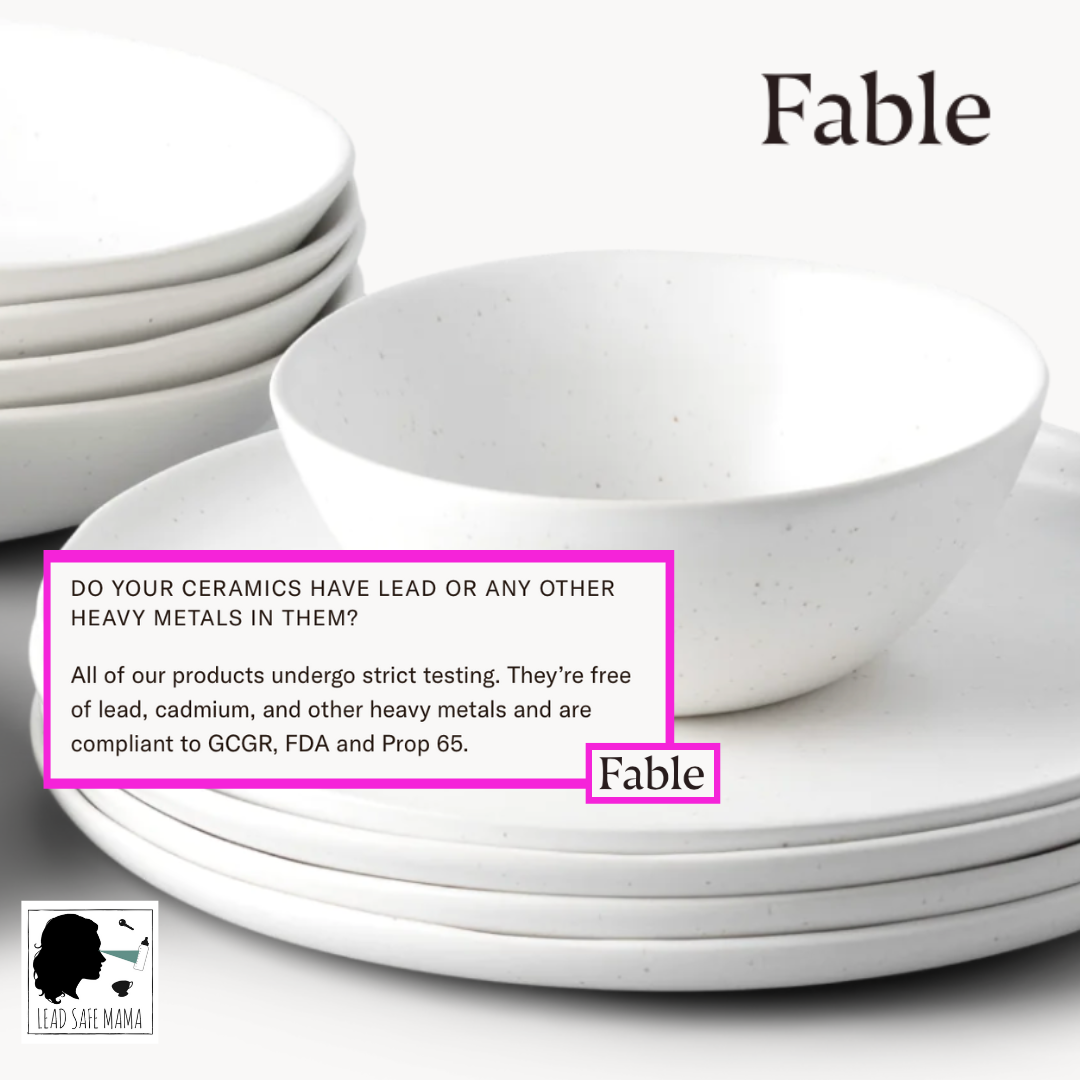
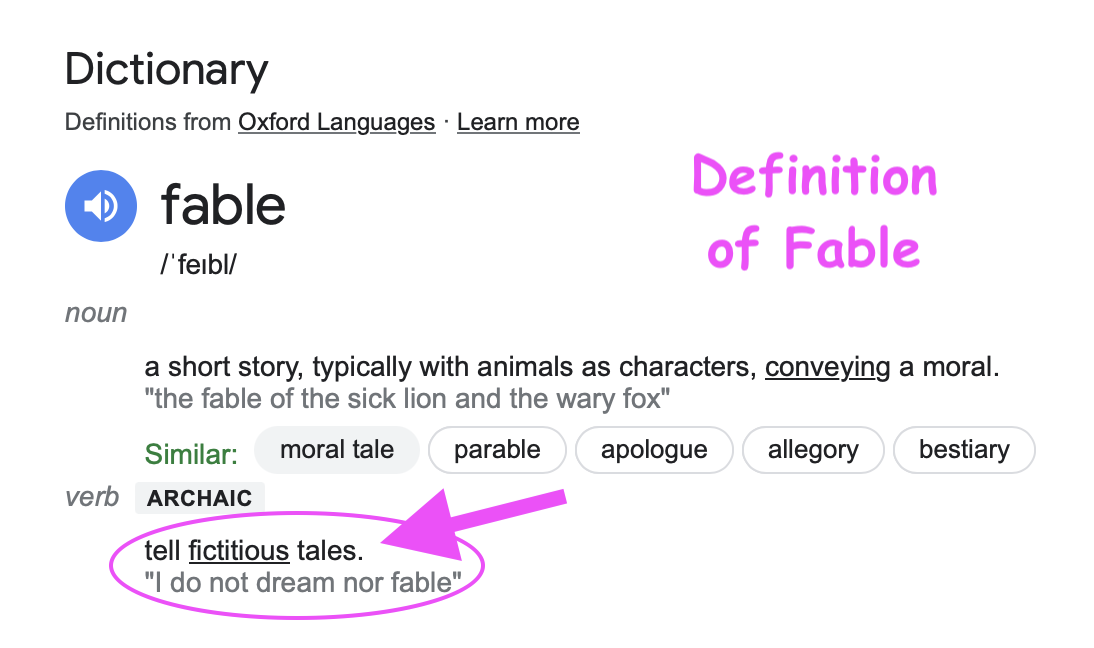








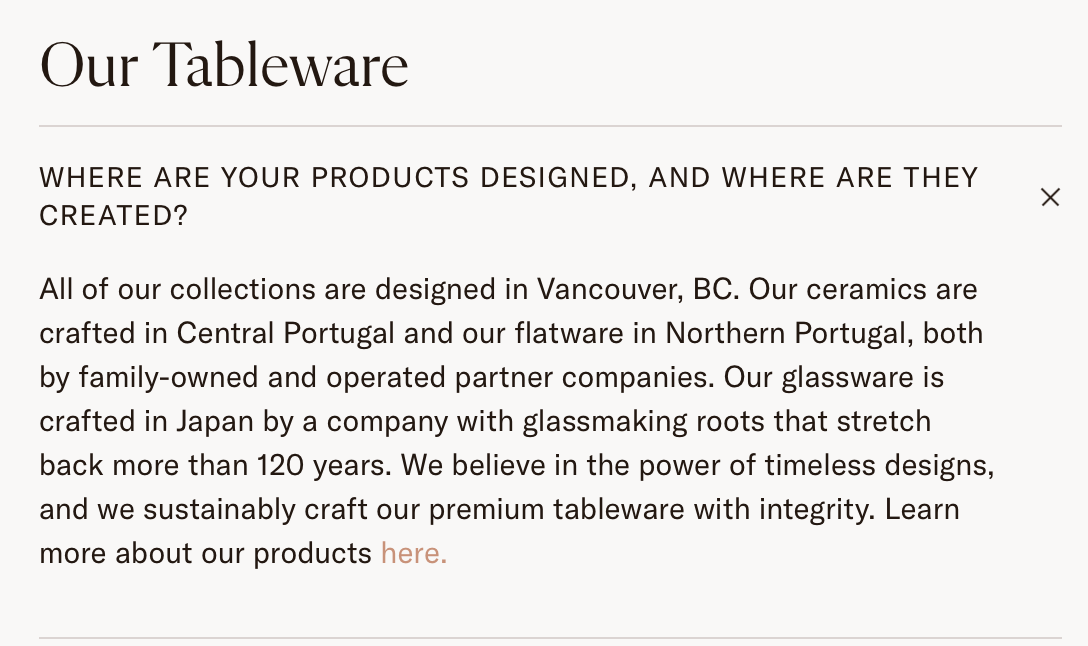
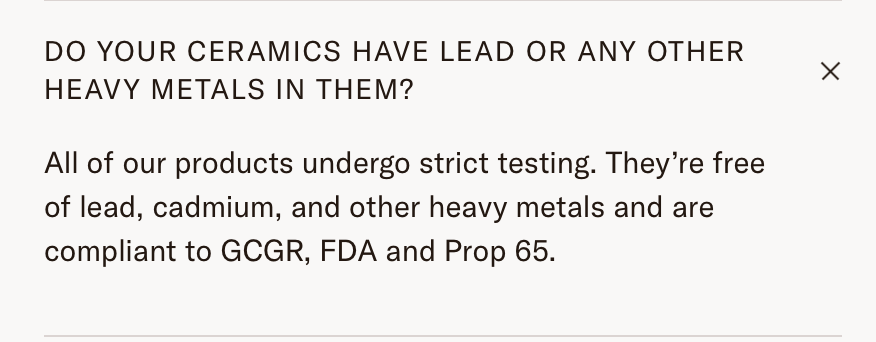
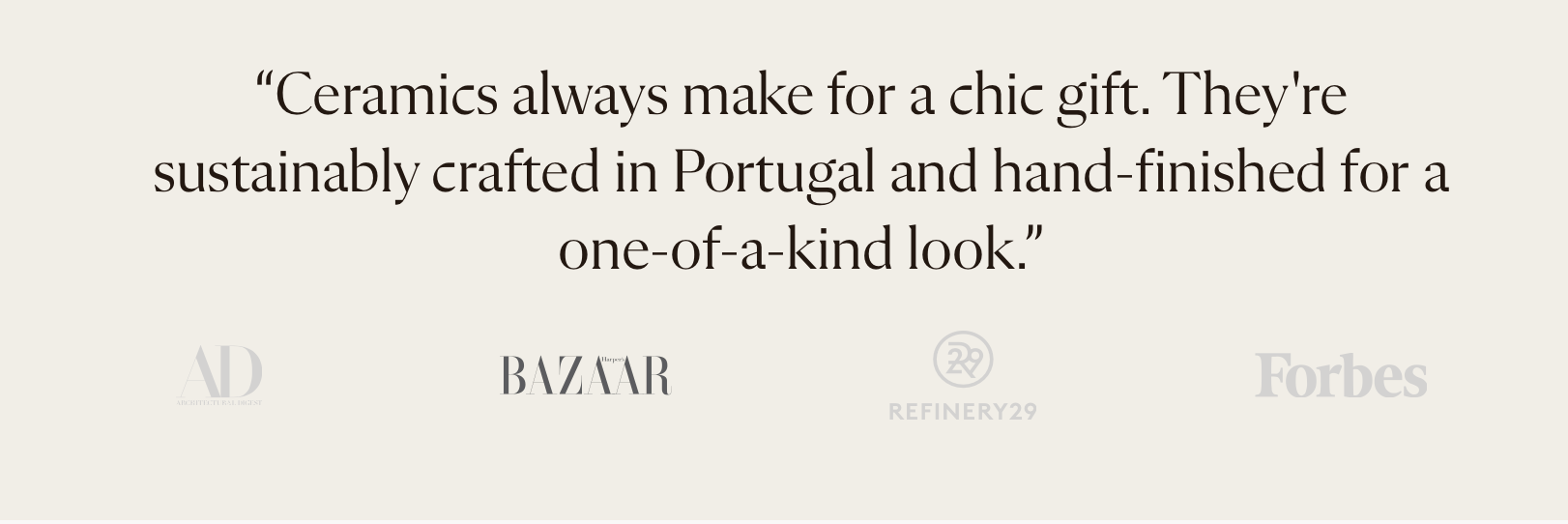

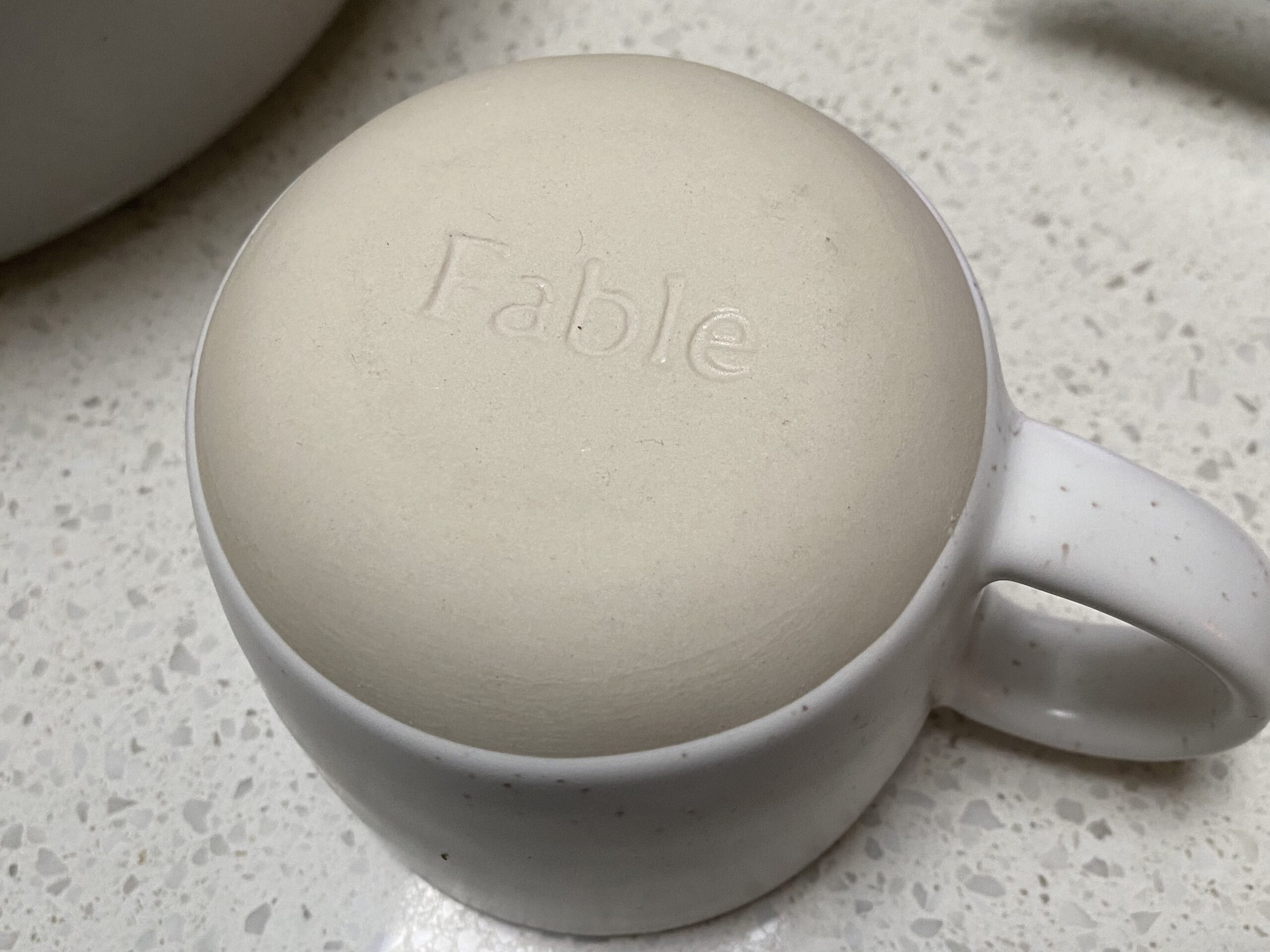

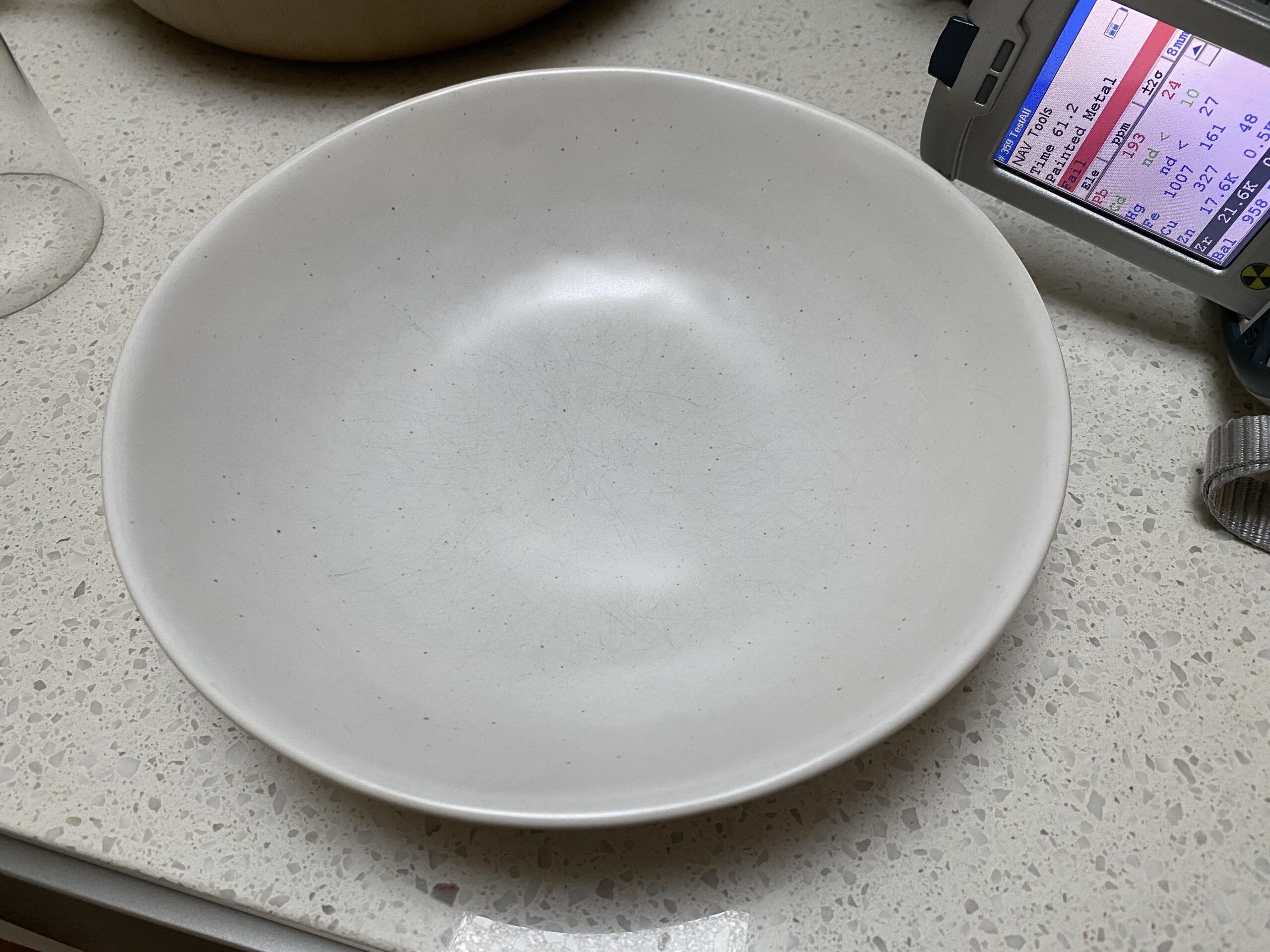
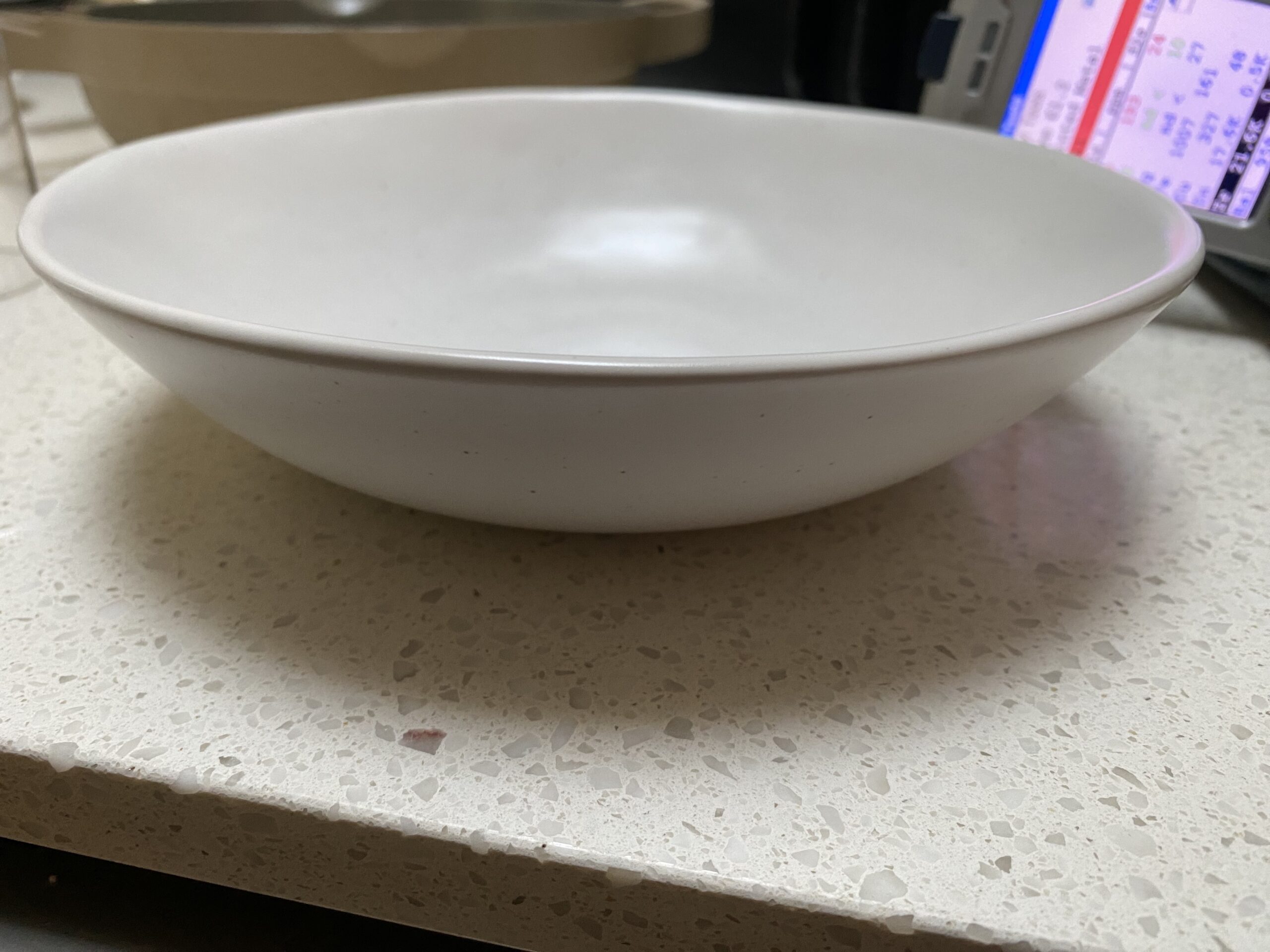
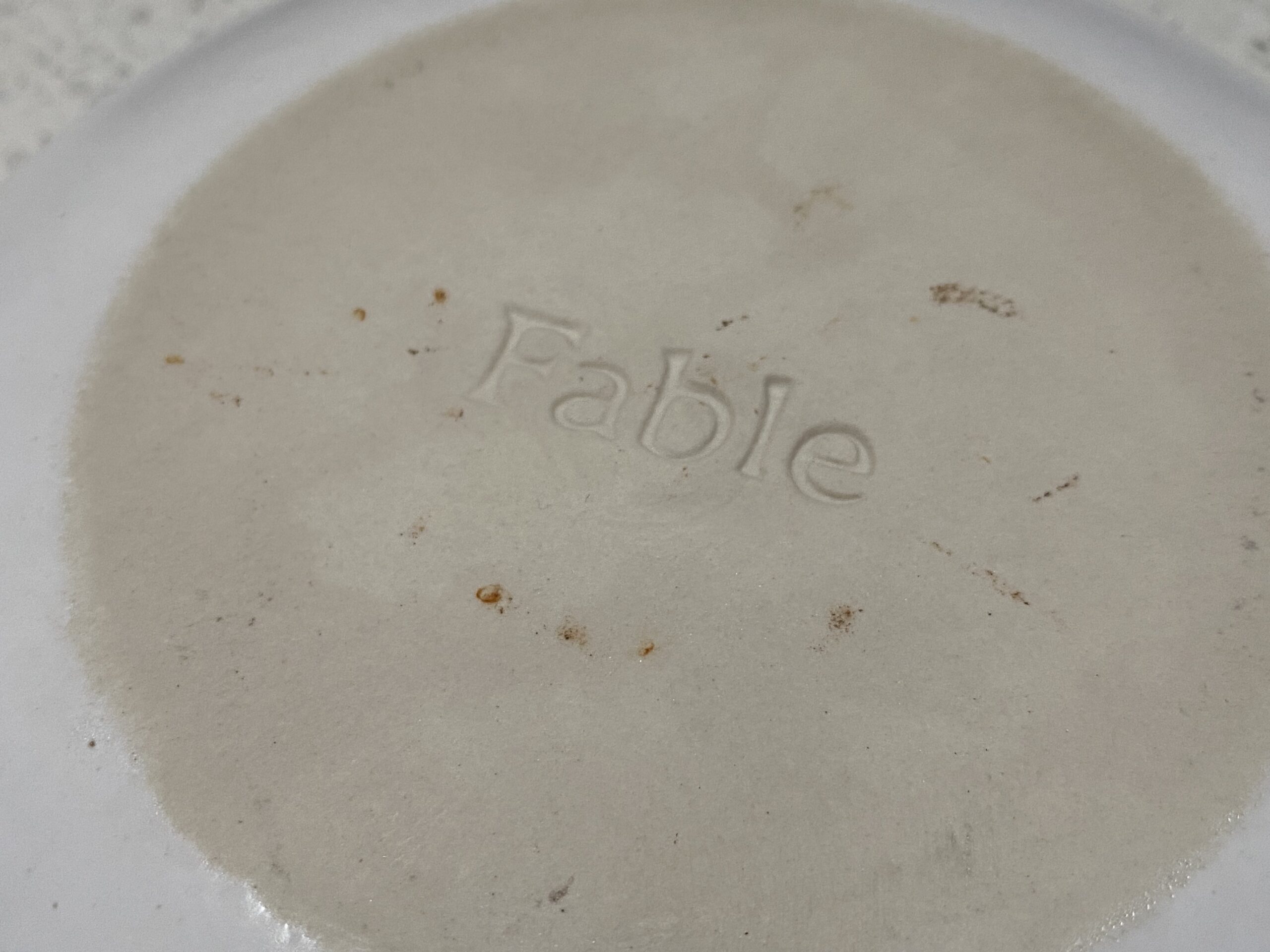
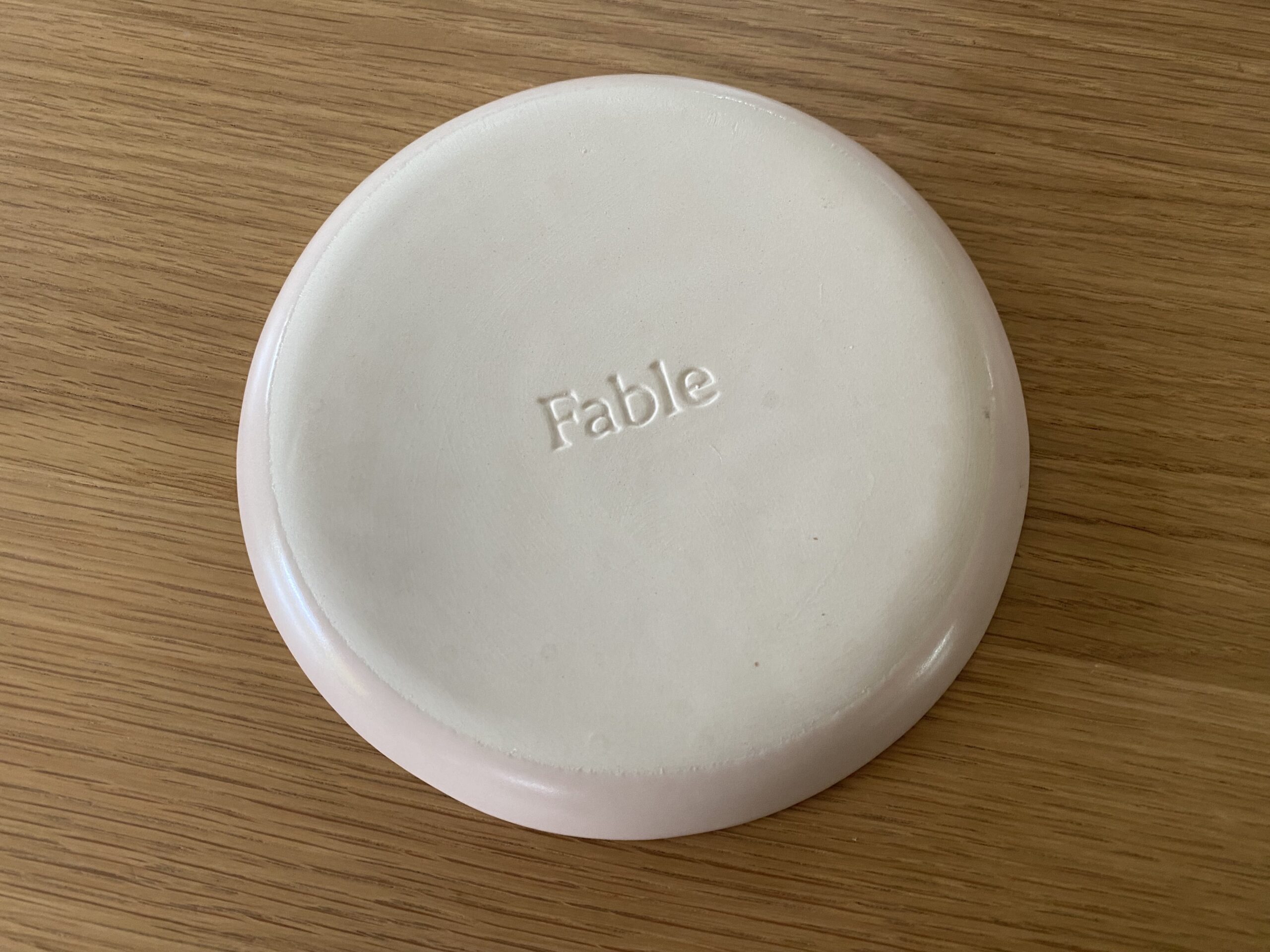
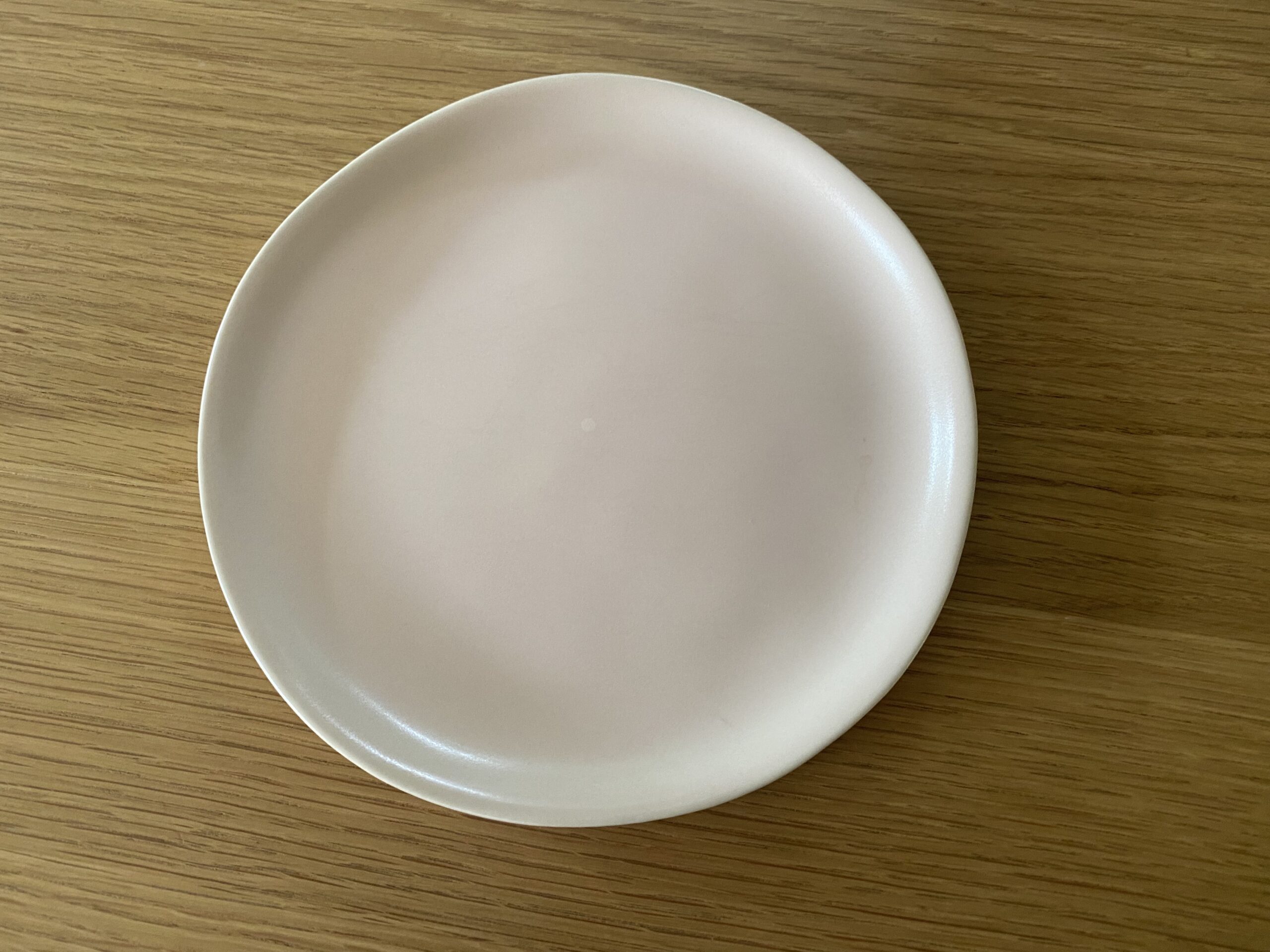
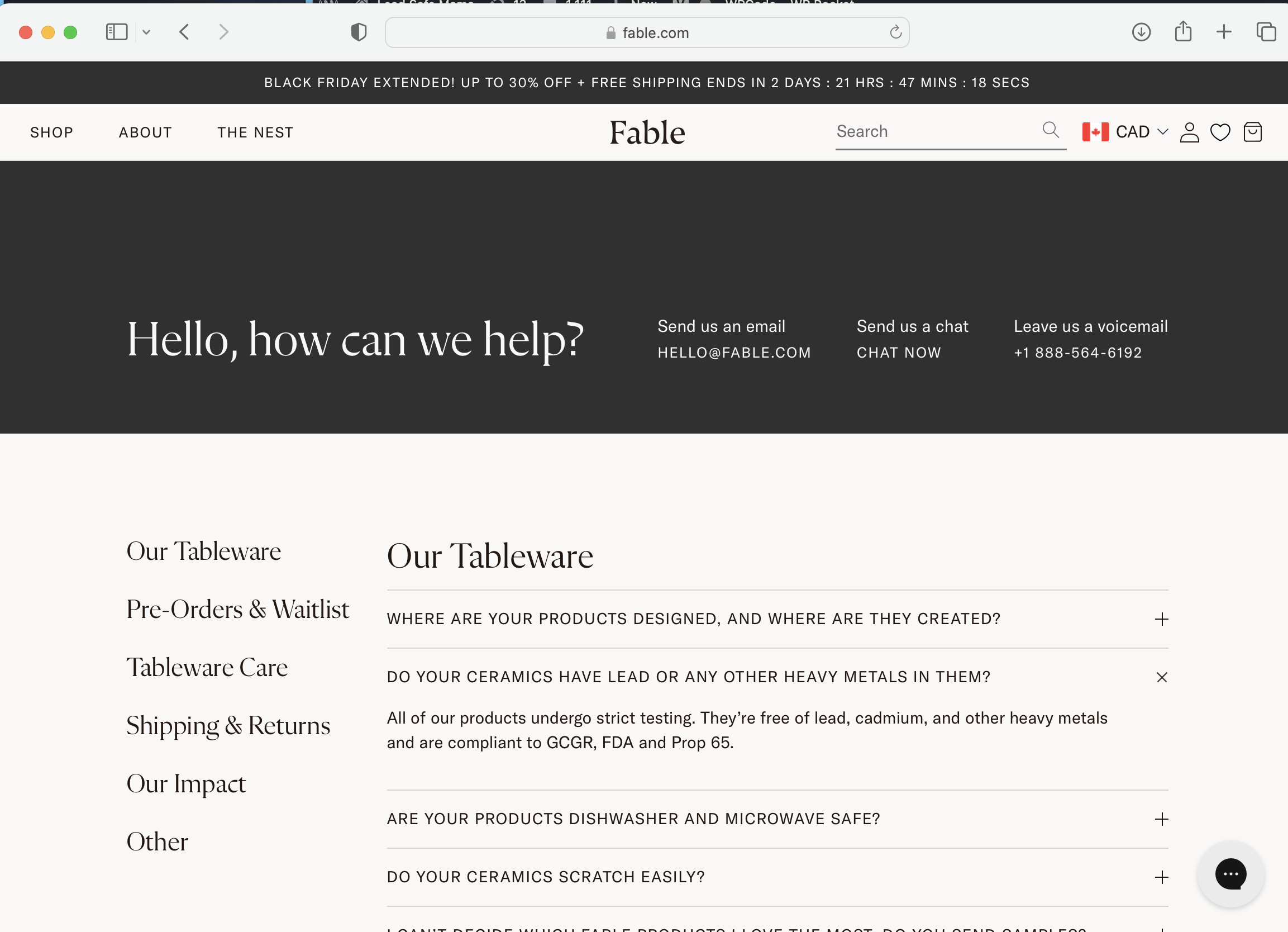

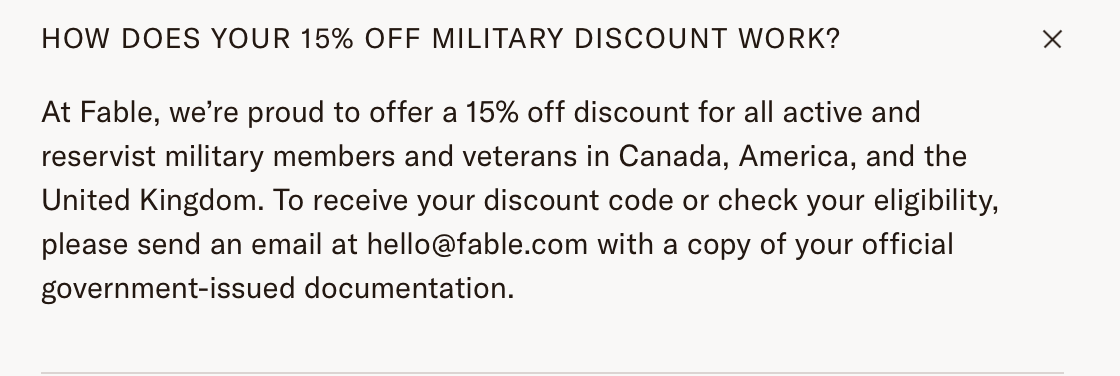
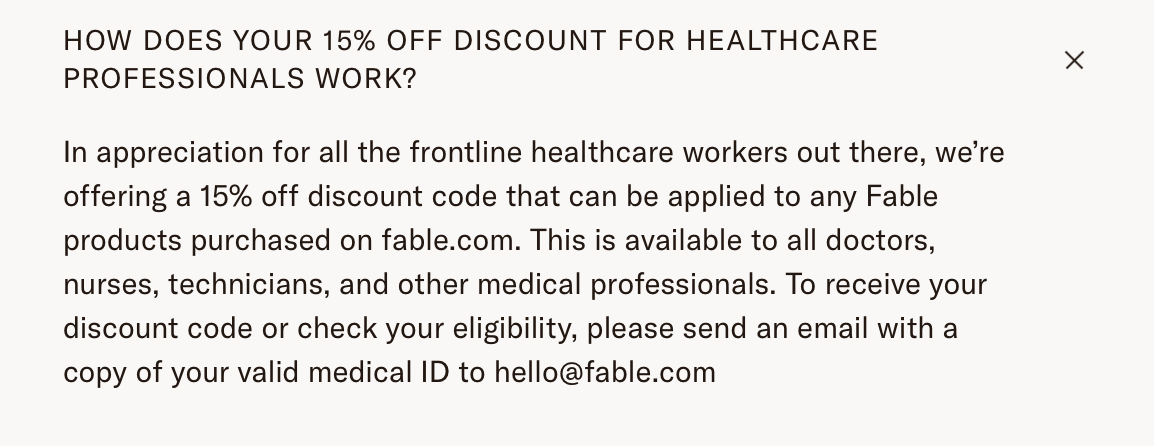
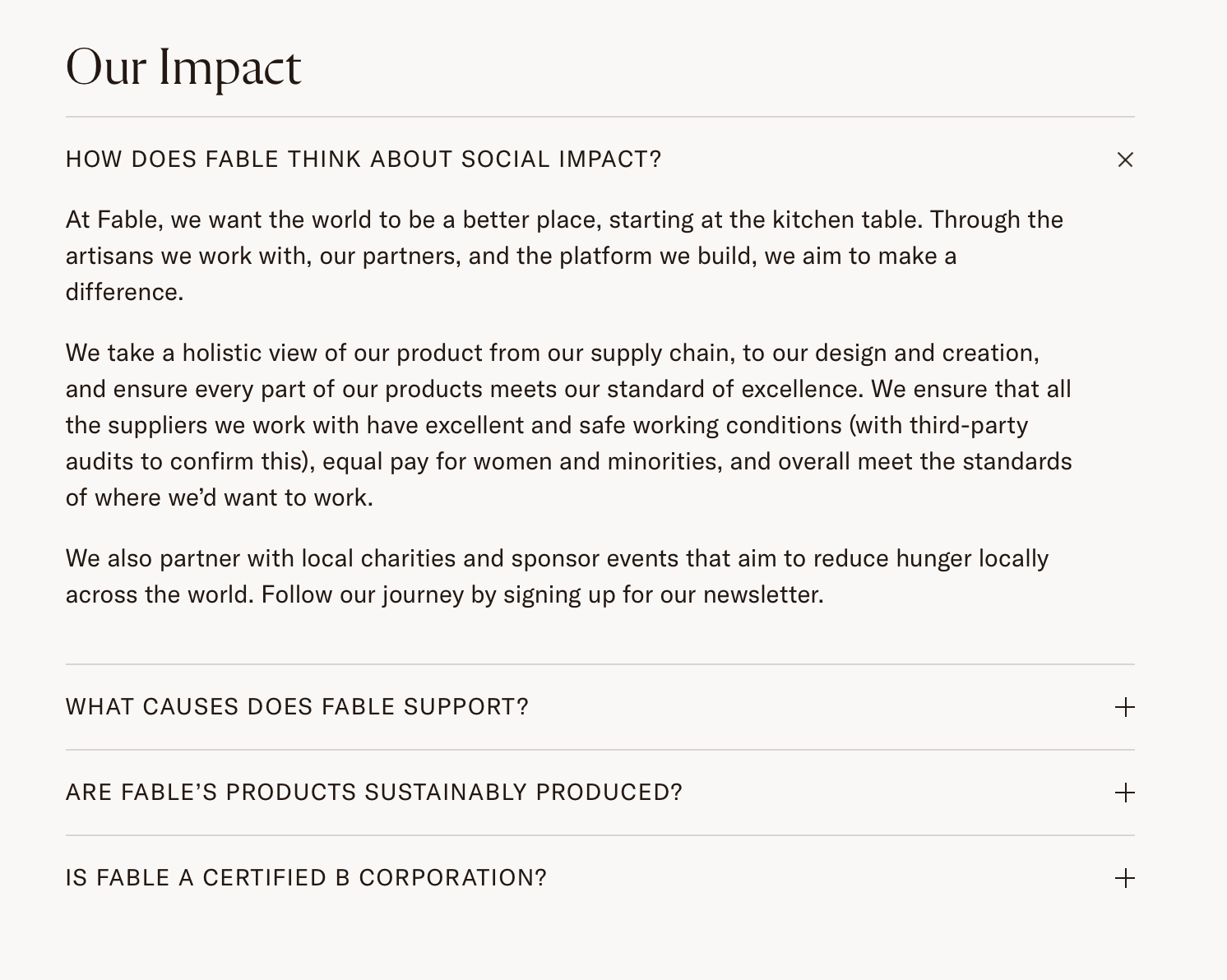
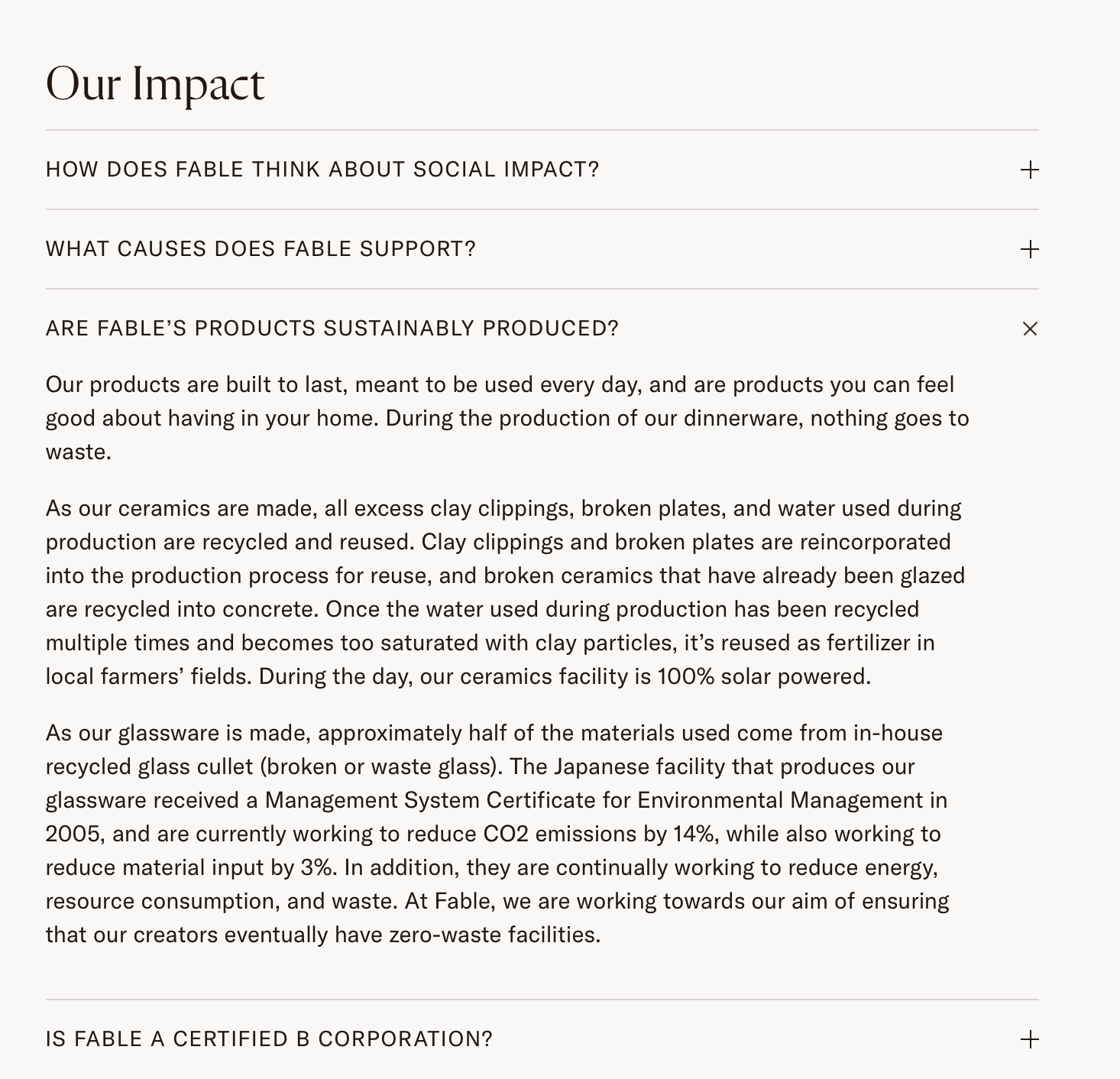
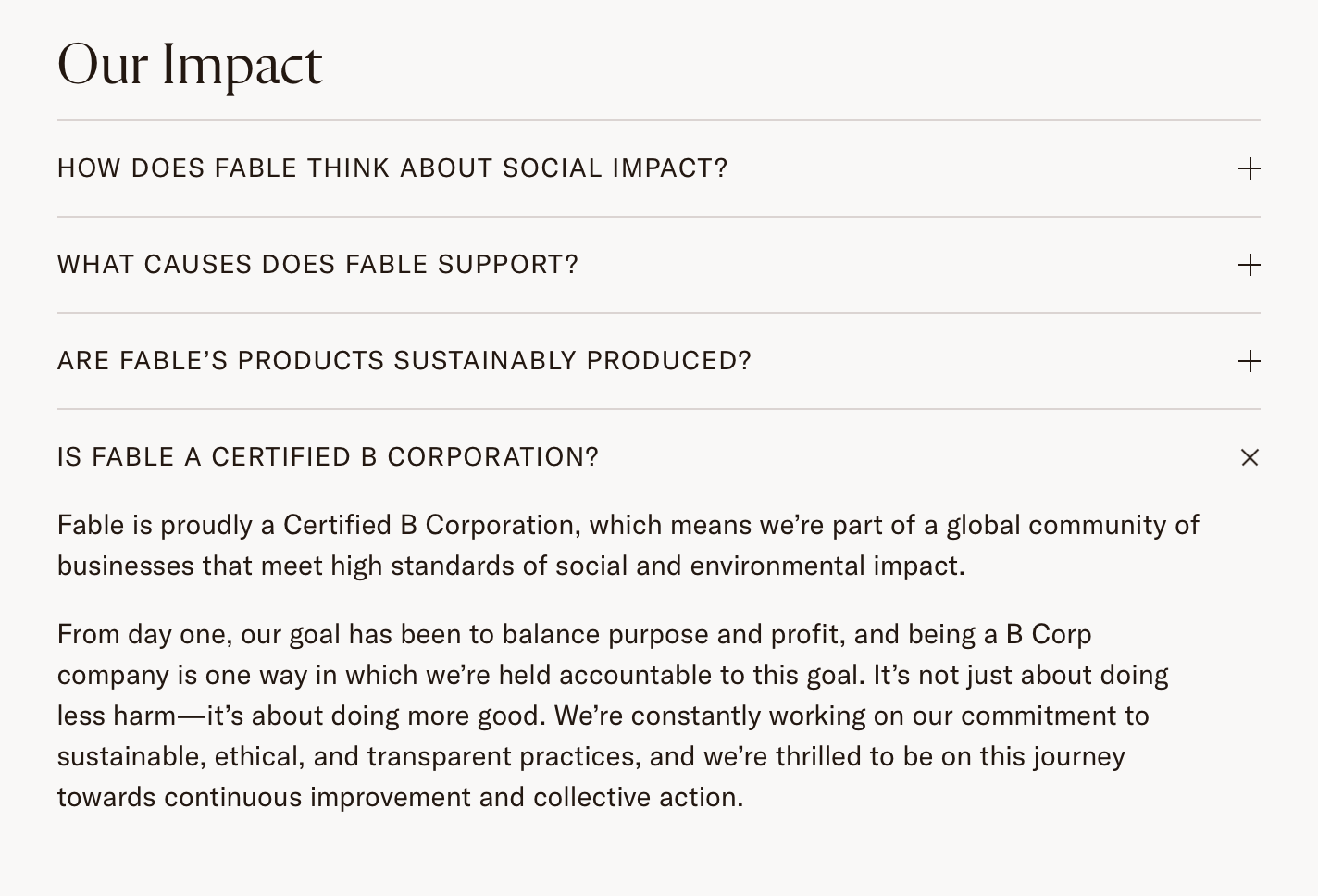
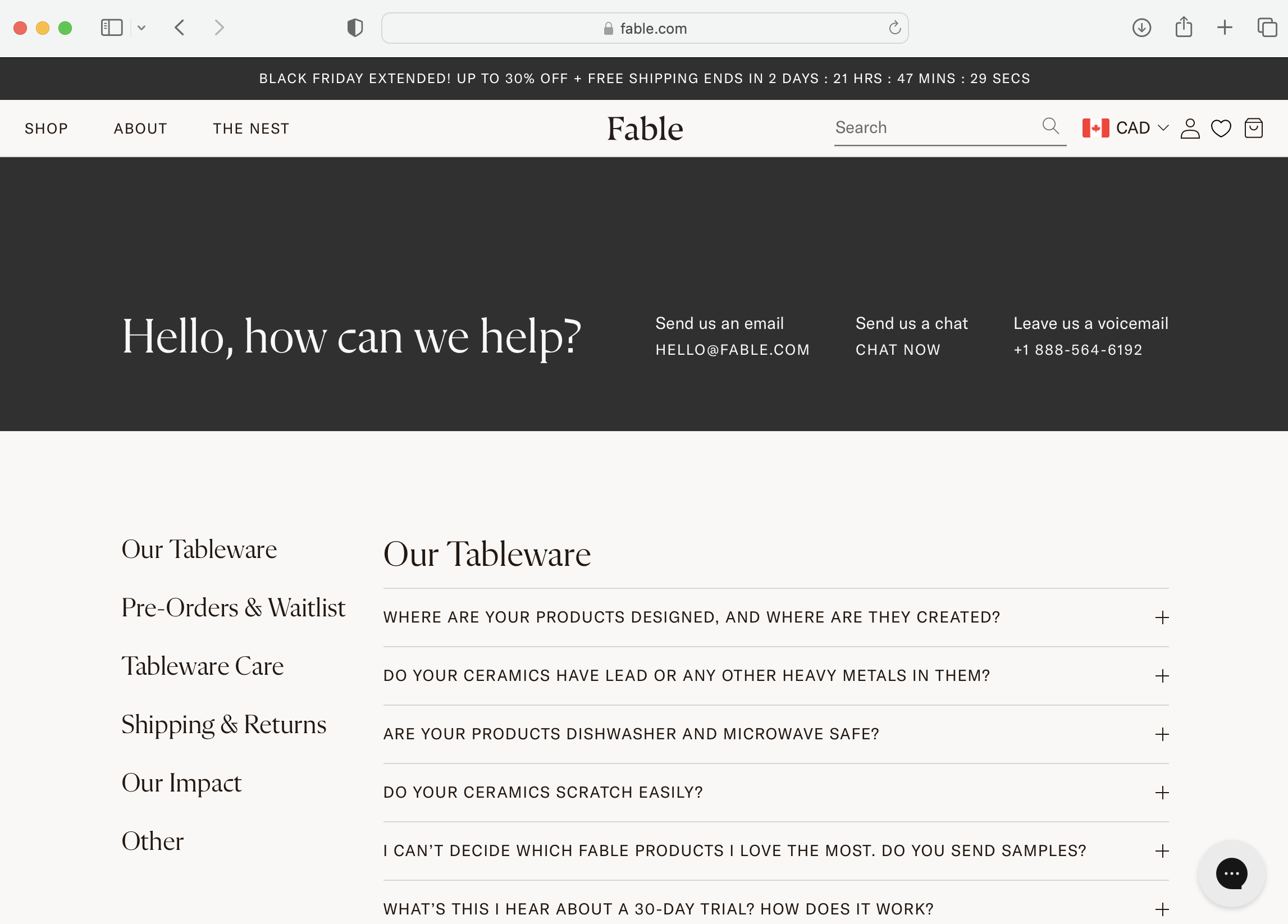

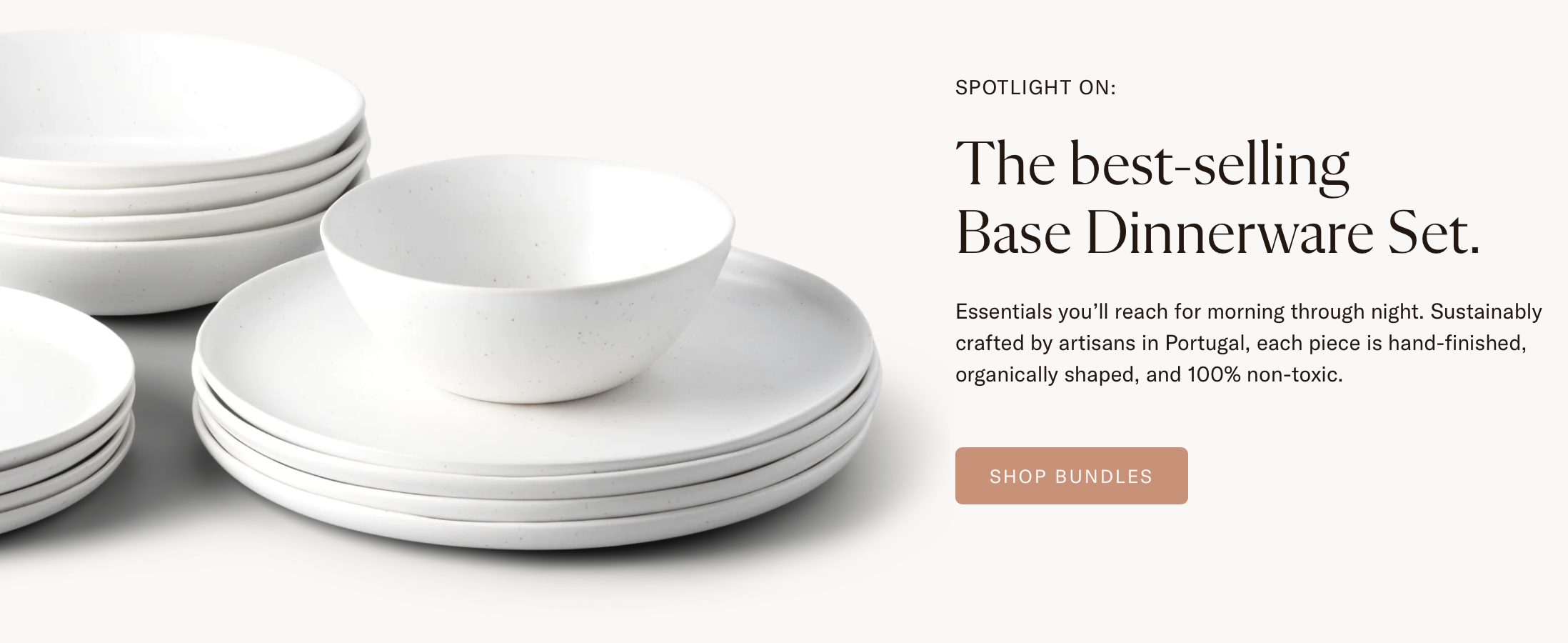

Thank you for sharing this. I’m very upset by this testing as I have many products from Fable. Would love to hear follow ups on this issue for this brand because of small toddler in the house. Worried about continued use for this product, esp. for my kid.
Thank you so much for this, I recently got a set from fable and I am very concerned now. I have two toddlers and thought this was a safe alternative to our silicone dishware. I will also send an email to them.
Thank you Tamara, I so appreciate all the effort you put into what you do.
I had just ordered over $900 worth of stuff from Fable, foolishly believing their spiel, and the long email from the co-founder, Tina, about Fable products being toxin free after I asked her about their testing methods. Fortunately, they hadn’t shipped yet, so I cancelled my order and wrote them a email (with a link to this article) expressing my disappointment with them and reminding them they have 2 choices: either double down on the greenwashing, or as you suggest to them, use it to their advantage to be true leaders and show that they really are trying to produce toxin free products.
This is the response I received:
Hi Nadine,
It’s not a problem; I have cancelled your order; expect an email in a few shakes. Just so you know, we are in the process of posting all of the testing we have done (not on a home test kit machine). While I appreciate external bloggers taking a look at our pieces, we too, do rigorous testing on the pieces and of course, are now publishing all results. You’ll see these live on our website in the coming days.
Best,
Joe
After pointing out to Joe, that you are no average blogger and the testing you do is not a “home test kit machine”, this was his response just now:
Hi Nadine,
Thanks for the thoughtful response. Our team is looking into this and will be presenting our third party lab tested results shortly. We appreciate Tamara digging deep into our product and sharing her home tested findings. We are in constant contact with our third party lab and will ensure all of the findings and reports are shared publicly.
Please let us know how we can help you further on this!
Wishing you all the best,
Joe
ohh – I am just seeing this … I responded to him already – lol (fuming just a bit!)
Thank you for sharing these communications.
T
https://tamararubin.com/2023/11/aptly-named-fable-pottery-selling-lead-contaminated-ceramics-marketed-as-lead-free-some-tea-aka-drama-developing-lead-safe-mamas-email-exchange-with-the-owner/
Wow did you seriously remove me from the Facebook group for pointing out the inconsistencies in your rants about this company? The business owner was NOT sexist and your claim was completely unfounded. Shame on you for your behavior. I’ll be sending screen shots of the ridiculous lies to fable. I usually agree with you but you were WAY off on this one.
Give them the opportunity to respond to your claim with the testing they are using a 3rd party to conduct. You just look petty.
I’m sure you will remove this too because you are apparently, not willing to accept ANY criticism of your shortcomings.
I don’t see anyone with the name Lenore in the group – either in the active member list or the banned member list. Are you sure you were in the group?
Here’s the group link: https://www.facebook.com/groups/121967574544014
People are banned from the group after multiple violations of group rules – but unless you have a different name for your Facebook name, I don’t think you were ever in the group.
Tamara
Hi Lenore,
I just want to point out that the 3rd party testing that Fable does, is the industry standard leach test, nothing more rigorous. Tina, the co-founder, sent me test results awhile ago when I enquired about their testing methods.
As Tamara has explained many times, the leach test does not prove that a product is actually toxin free. Even dishes with high levels of lead and other toxins can pass the leach test when new. If you need this distinction explained, please let me know and I’ll go into more detail and point you in the direction of more info.
I’m not sure how Tamara’s “rant” is inconsistent….? And what claim is completely unfounded? What ridiculous lies? Can you please explain?
The fact remains that Fable has either knowingly or unknowingly (and therefore negligently) allowed toxins in their products, all while portraying themselves and their wares as the purest of the pure. Calling this out is not petty, it is holding a company to account, which is the right thing to do.
I have to say, you sound an awful lot like a Fable minion…I know troll talk when I see it.
Tamara, I recently bought a dinnerware set from Fable (pink)because of their statement that it is toxin free. Now reading your findings on Fable dinnerware I’m angry. These were expensive and I did my research, or so I thought I did. I don’t know what to do.
My daughter has three children and I’m looking to buy her a new set and don’t know what to buy. Any suggestions would be much appreciated. Thank you for your time
Cindy Beck
Hi Tamara,
I’m wondering if based on your testing, you would consider Fable dinnerware safe for adult use— as in clearly not 100% lead free, but significantly better than average. I recognize the greenwashing issues and agree. From a purely functional (vs philosophical) standpoint , I’m on the hunt for new dinnerware and after a pretty significant lead paint renovation experience, trying to be careful. My current alternative to Fable is Bennington Potters, but they’re significantly more expensive and less to my aesthetic taste. Without being well versed in ppm, I’d appreciate knowing if you (or anyone on the forum more educated than I) would be concerned about eating from these products daily; no children in the home. I’m having a hard time discerning if the big concern here is corporate claims or product safety. Thank you!
Did you get a reply to this? I am interested in finding that out as well.
Has there been any follow up on Fable since 2023? I am looking at their website and no longer see those posts you copied. Have you re-tested their dinnerware again?
Has there been any update to this— given that they were a relatively new company then? We unfortunately just bought fable dinnerware before I came across this.
No – they just ignored things and didn’t change their advertising.
T